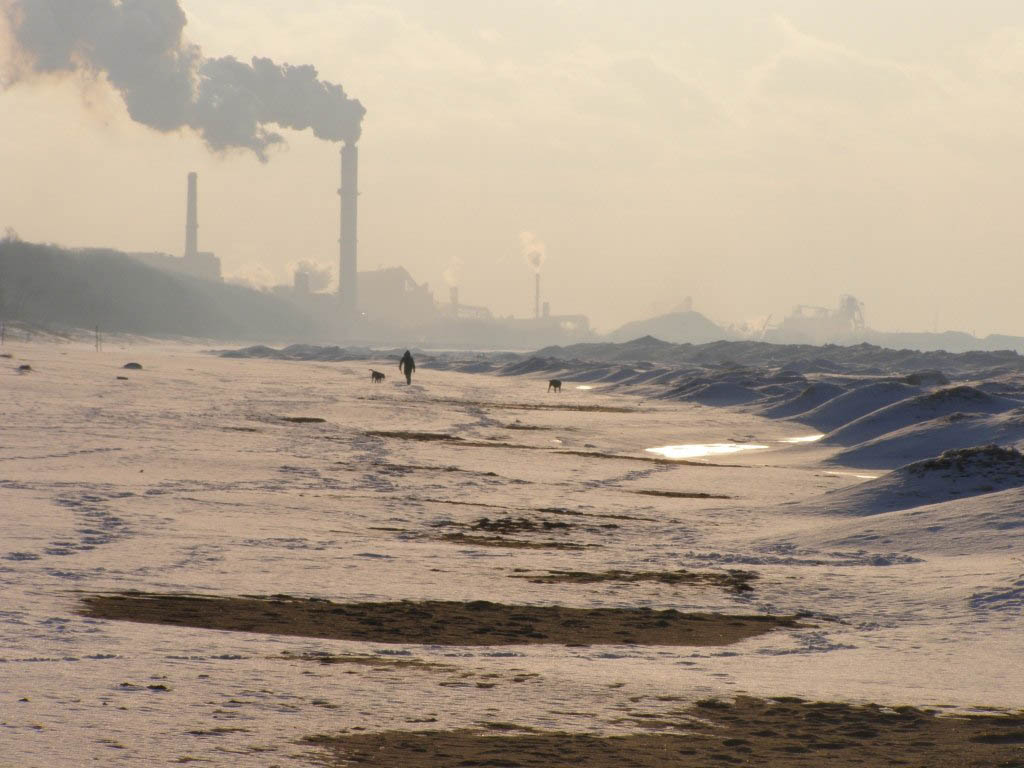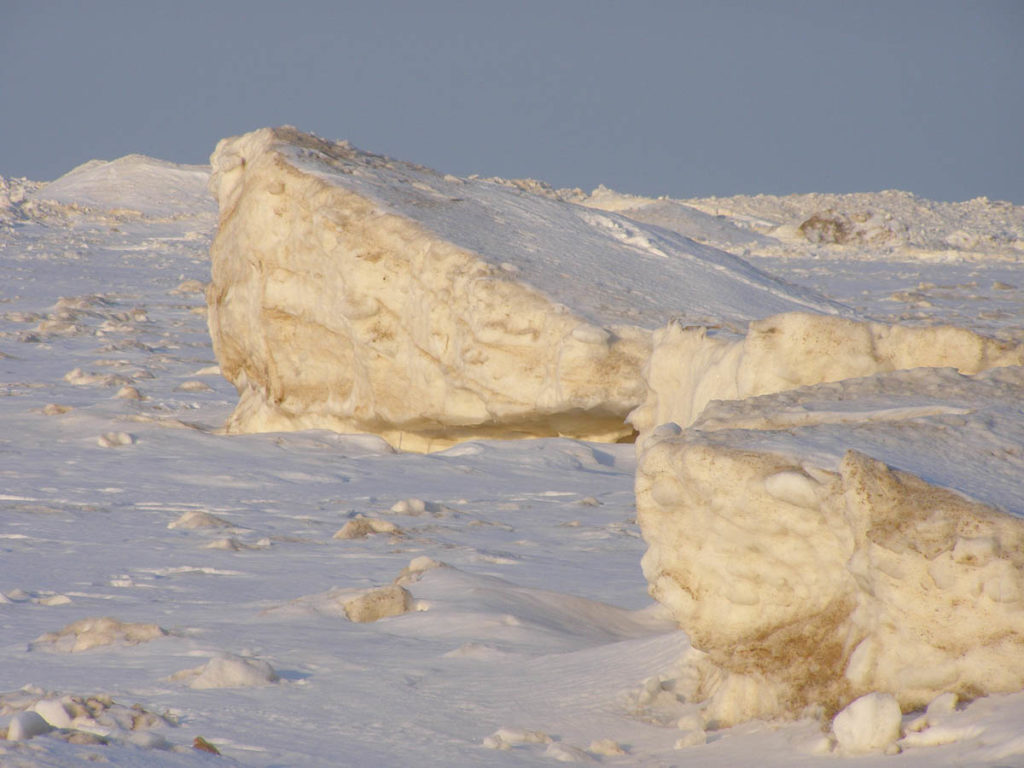Shelf ice forms when a portion of a lake’s surface freezes. It is frequently washed up on the beach. This is a common occurrence in the Great Lakes.
Shelf ice develops from float ice. Float ice is similar to drift ice, but it rarely grows large enough to support humans or large animals. The cold temperatures cause small areas of open lake to freeze, forming float ice. When the lake is calm, similar ice will form along the shoreline. Ice will accumulate over time due to continued freezing on the open lake and snow accumulation on the surface. The Great Lake’s surface is rarely calm enough for the entire surface to freeze. The smaller lakes, Lake St. Clair, Lake Erie, and Lake Ontario, however, will freeze over more frequently than the larger upper lakes.
The wind moves the float ice and creates waves, which move the ice as well. Ice will build up on the lake’s leeward shores over time. Ice begins to accumulate along the east and southern shores of Lake Michigan, similar to sand that is moved by the wind and waves. When pushed onto the beach, it remains, and over time, the ice that has already been pushed ashore accumulates on top of the beach and the ice that has already been pushed ashore.
On days with a strong off-shore wind, an ice sheet may extend as far as the eye can see into the lakes. However, there is likely to be open water several miles wide across the lake.

Shelf ice is a floating mat of ice, but unlike a frozen pond or small lake, it is not a uniform sheet of ice. The shelf ice is a jumble of ice chunks pushed together by the wind and waves. It’s as if you pushed a pile of rubble up against a wall. The pile becomes narrower and rises in a ridge as you push harder. However, nothing in the pile is stable. Individual pieces (ice in the case of shelf ice) are not initially connected; instead, they float on the water’s surface and rest on each other. Many become squished together, but there are pockets of air throughout the structure. Because each piece of ice formed independently, each has a different thickness, resulting in variations in strength, density, and depth.
The ‘shelf’ gradually extends out from the shore, forming a long-lasting floating ledge. Depending on the size of the ice pieces and the size of the air pockets, the ledge can become very thick. Grounding on the shore or lake bottom, additional freezing from seaspray, precipitation, and undersurface ice formation, and melt/refreezing cycles from solar heating and weather variations can all help to stabilize the ice sheet. As a result, the shape of an ice shelf can range from a large flat surface to a jumbled pile of blocks with parallel ridges.
When a ‘shelf’ extends to a sand bar, a ridge that is higher than the rest of the shelf forms. If a beach front has more than one sand bar, the ice shelf will form a ridge along each sand bar.
The Danger of Shelf Ice
The ice may give way unexpectedly due to its uneven surface with possible air holes throughout the shelf ice. Through an air pocket, one can fall several feet into open water. Due to the ice’s friability and the rate at which cold water saps energy, self-rescue is difficult.







